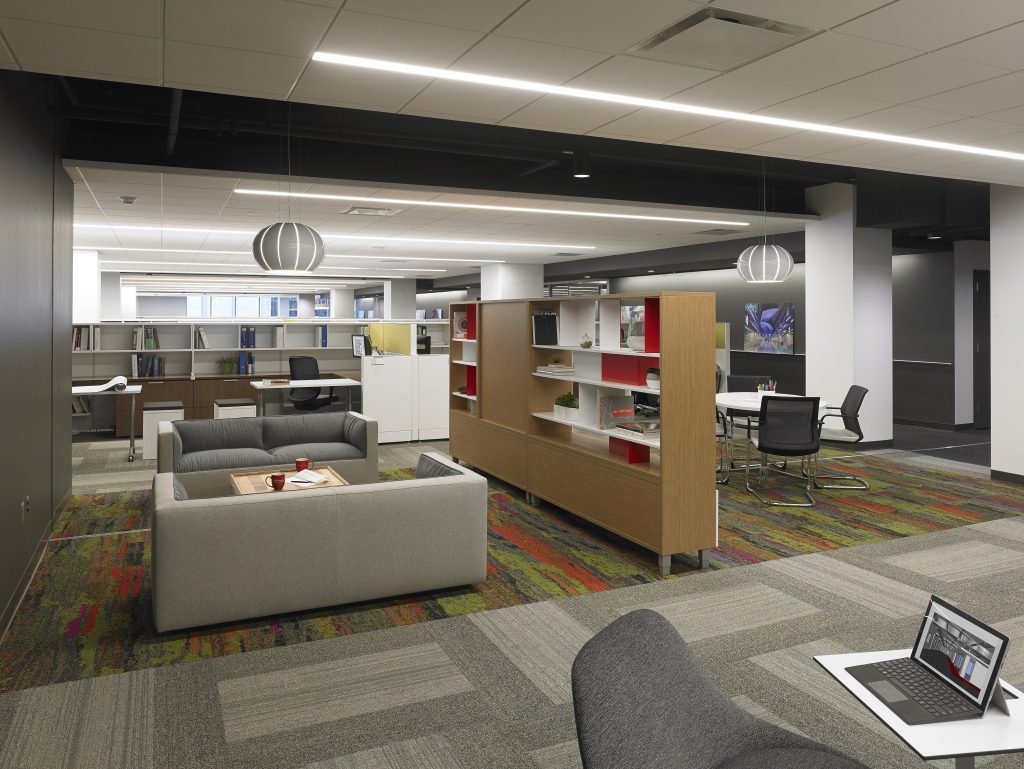Solving 5 Problems for Lighting Designers Through Ingenuity

Light is a very technically difficult medium to work with. It’s ephemeral and changes throughout the day and with each season. Also, you can’t generally see light until it splashes across a surface.
As with most areas of design, when it’s done well, good lighting design is often nearly invisible—but when it’s done badly, it’s glaringly obvious.
To deal with these challenges, lighting designers need lighting solutions that can deliver on both practical and aesthetic fronts.
Whether it’s a custom solution to highlight the unique features of a space or simply delivering consistent quality over and over, Amerlux is in its fourth decade of providing innovative solutions to lighting designers.
“Amerlux has listened to the requirements of lighting designers to provide products that make successful projects,” said Carlos Alonso-Niemeyer, principal at Reflex Lighting, Amerlux’s manufacturer’s rep for the northeast.
Lighting designers have broad requirements for lights and they prize lighting solutions that furnish excellent glare control, color consistency between products, and compatibility with control systems, while delivering beautiful light distributions.
Seamlessly blending into the space
Sometimes the light fixture is meant to be the centerpiece of a space, (e.g. a decorative chandelier), but more often than not, designers want fixtures that blend in and don’t draw attention to themselves. They need fixtures that will put the spotlight on other elements of the space, rather than take the spotlight themselves.
Avoiding glare
Glare is the visual discomfort humans experience when a bright light source is within a direct line of sight. Designing to avoid glare is a big part of what lighting designers do.
“Glare produces a lot of discomfort to users, and it’s a big issue with LEDs. LEDs are point source lights and they can be very glary,” said Alonso-Niemeyer. “Lighting designers want to have a ‘quiet ceiling,’ meaning the ceiling doesn’t have areas that bother our eyes. The ceiling should be a uniform space without sparkles and glare.”
Tools Amerlux provides lighting designers in the fight against glare include performance lenses and patent pending light block shields that provide coverage when lenses shrink.
Lights that are consistent with each other
Rarely does a project require only one kind of light. More often, designers use a combination of different lights—task lights, down lights and ambient lighting—for the optimally lit space. Lighting designers need lights that are consistent; products should be consistent with each other and within their own product family. A common problem with legacy light sources is they color shift over time—some in just a few hundred hours of use.
“When you put quality products together, they will have a consistent shade of color temperature,” said Alonso-Niemeyer. “Products without such quality would have pinkish or green hues and may have different color hues between them.”
Superior controllability
LED lighting is infinitely controllable. With the right system, you can do basic things like dim the lights, use timers and connect them to occupancy sensors as well as more advanced things like daylighting for maximum energy efficiency and color tuning for optimal cognitive functioning among workers.
“LEDs work with drivers that control them, and the drivers have different protocols that control them,” said Alonso-Niemeyer. “When you control LEDs and dim them, some products tend to flicker, or the dimming effect doesn’t work. Lighting designers want to make sure that the drivers and controls work together.”
Different types of light distributions
The light distribution of a fixture is an important variable lighting designers look at and their needs vary depending on the type of light. “With linear products, lighting designers want a wide distribution (also called a ‘batwing’ or low-peak intensity distribution) for a uniform ceiling,” said Alonso-Niemeyer. “With downlights, they need a clean beam, one that doesn’t leave striations and halos on the walls.”
For more than 30 years, Amerlux leveraged customer feedback as a critical source of new product innovation, working closely with lighting designers and architects.
“Our inspiration truly comes from listening and we take a thoughtful approach to lighting,” said Bill Plageman, vice president of marketing at Amerlux. “Innovation is about taking disruptive technology that’s emerging and understanding exactly how it will be used, so we listen to our customers, as well as scientists, designers, doctors, retailers, and other experts in the industry and consider their input very carefully before we launch new products and solutions.”



